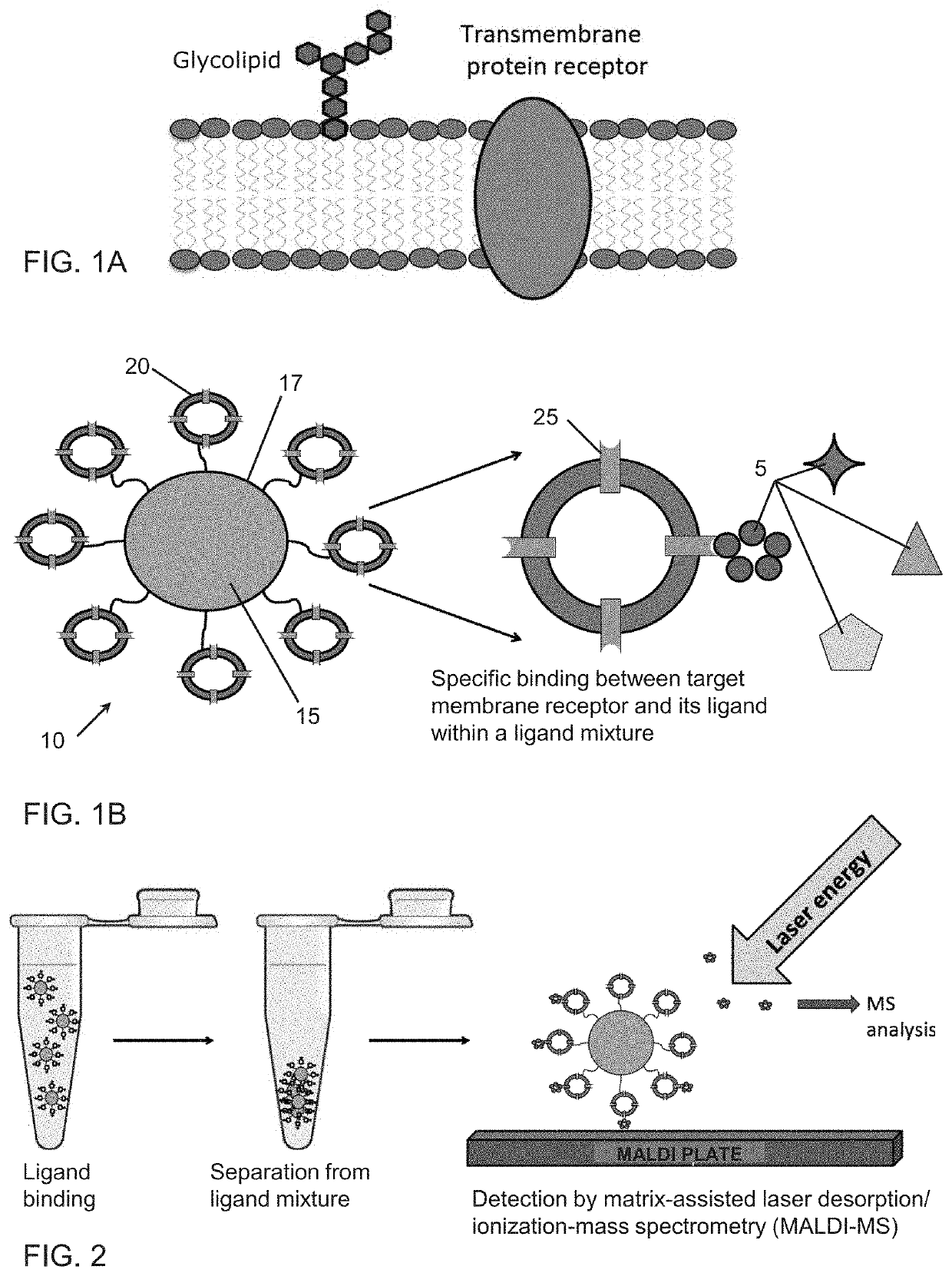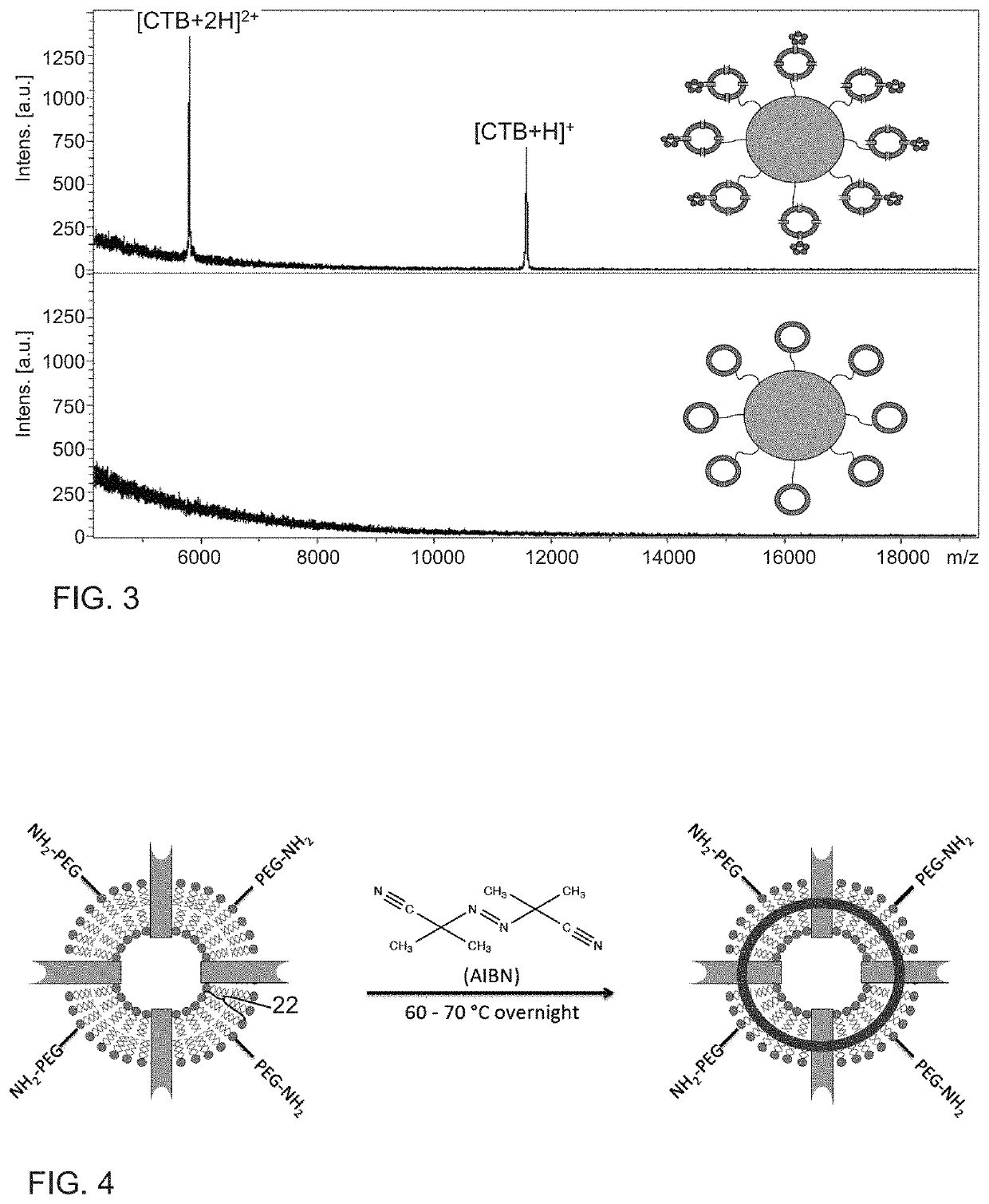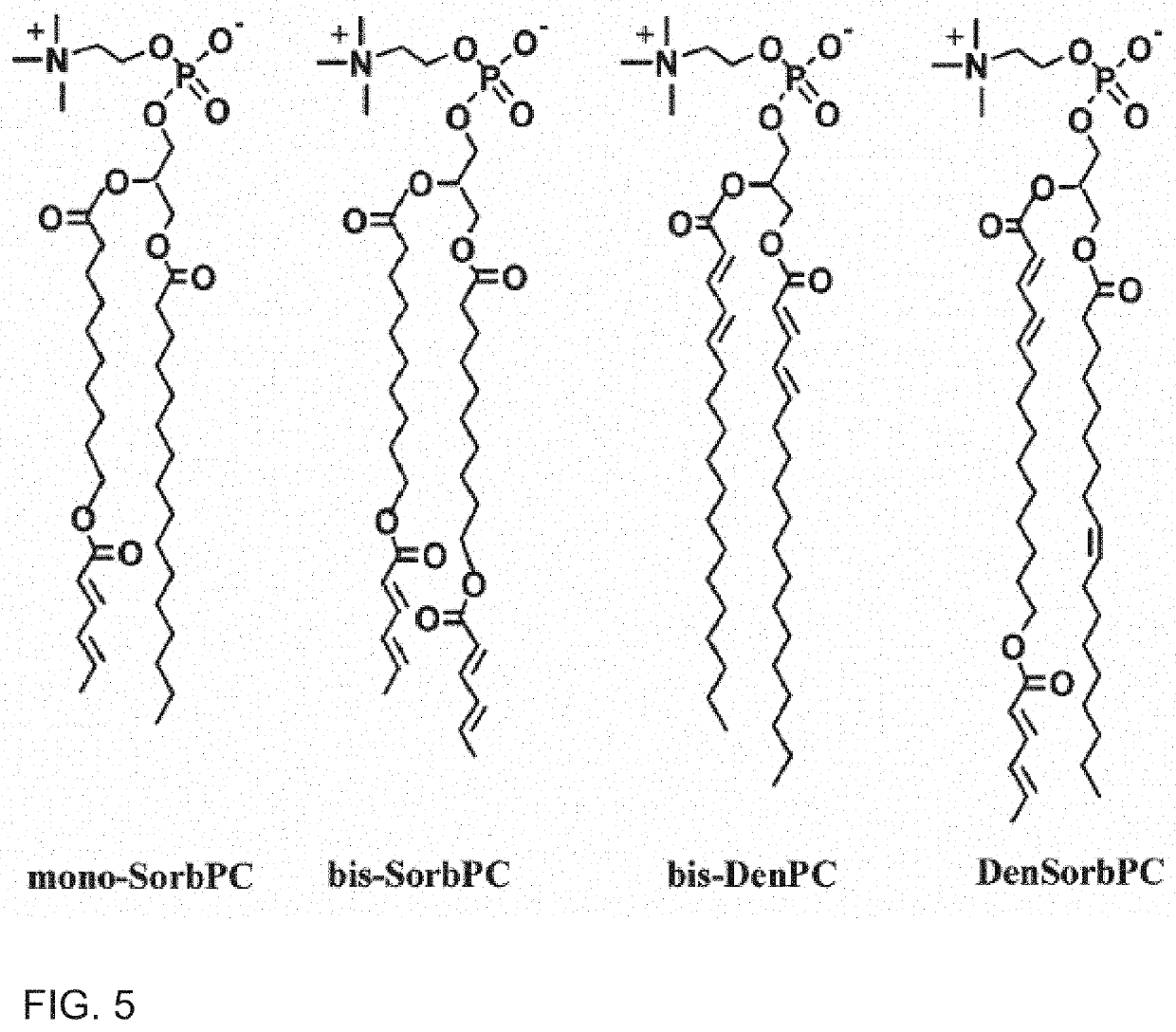Stabilized vesicle-functionalized microparticles for chemical separations and rapid formation of polymer frits in silica capillaries using spatially-defined thermal polymerization
a technology of thermal polymerization and vesicle, which is applied in the field of pull-down assay platforms, can solve the problems that the discovery of ligands that target transmembrane proteins is limited to platforms that support protein function, and achieves the effects of increasing non-covalent interactions, enhancing functional utility and lifetime of vesicle functionalized microparticles, and increasing vesicle stability
- Summary
- Abstract
- Description
- Claims
- Application Information
AI Technical Summary
Benefits of technology
Problems solved by technology
Method used
Image
Examples
Embodiment Construction
"d_n">[0048]Following is a list of elements corresponding to a particular element referred to herein:[0049]5 ligand[0050]10 assay platform[0051]15 microparticle[0052]17 microparticle surface[0053]20 lipid vesicle[0054]22 lipid bilayer[0055]25 receptor[0056]100 apparatus[0057]105 capillary[0058]107 capillary wall[0059]109 capillary end[0060]110 heating device[0061]115 heating tip[0062]120 temperature controlling device[0063]130 jig[0064]132 jig end
[0065]As used herein, the term “sorbyl-containing monomer-” refers to a compound containing a 2,4-hexadienoyl group. Non-limiting examples of sorbyl-containing monomers that can be used as polymerizable lipid monomers include 1,2-bis[10-(2′,4′-hexadieoyloxy) decanoyl]-sn-glycero-2-phosphocholine (bis-SorbPC), mono-sorbyl phosphatidylcholine (mono-SorbPC), dienoyl sorbyl phosphatidylcholine (den-SorbPC), and other related compounds such as bi-Sorb and mono-Sorb lipids of different carbon total tail lengths that range from 15,15 to 19,19 and ...
PUM
 Login to View More
Login to View More Abstract
Description
Claims
Application Information
 Login to View More
Login to View More - R&D
- Intellectual Property
- Life Sciences
- Materials
- Tech Scout
- Unparalleled Data Quality
- Higher Quality Content
- 60% Fewer Hallucinations
Browse by: Latest US Patents, China's latest patents, Technical Efficacy Thesaurus, Application Domain, Technology Topic, Popular Technical Reports.
© 2025 PatSnap. All rights reserved.Legal|Privacy policy|Modern Slavery Act Transparency Statement|Sitemap|About US| Contact US: help@patsnap.com



